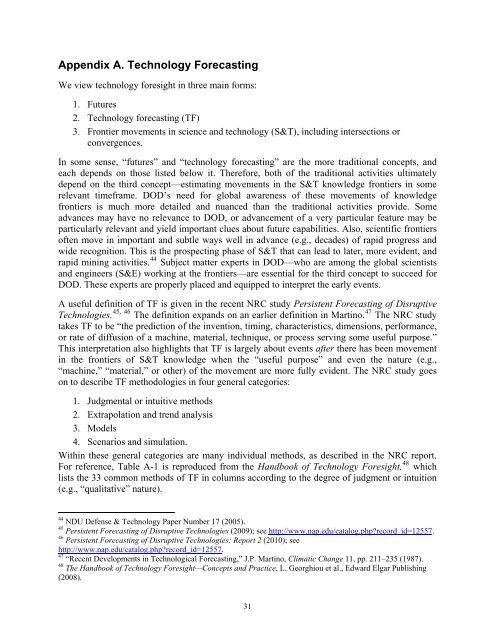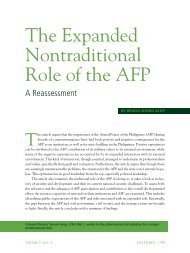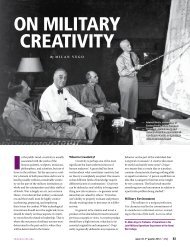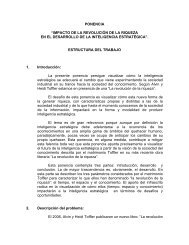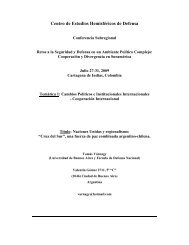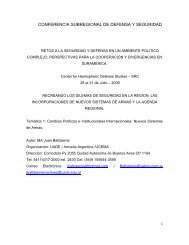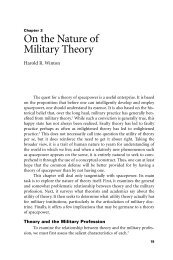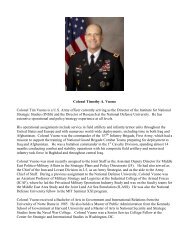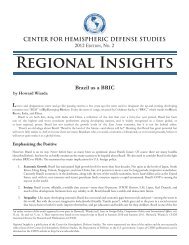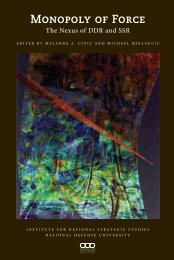In the second half of the 20th century, the US enjoyed pre-eminence ...
In the second half of the 20th century, the US enjoyed pre-eminence ...
In the second half of the 20th century, the US enjoyed pre-eminence ...
You also want an ePaper? Increase the reach of your titles
YUMPU automatically turns print PDFs into web optimized ePapers that Google loves.
Appendix A. Technology Forecasting<br />
We view technology foresight in three main forms:<br />
1. Futures<br />
2. Technology forecasting (TF)<br />
3. Frontier movements in science and technology (S&T), including intersections or<br />
convergences.<br />
<strong>In</strong> some sense, “futures” and “technology forecasting” are <strong>the</strong> more traditional concepts, and<br />
each depends on those listed below it. Therefore, both <strong>of</strong> <strong>the</strong> traditional activities ultimately<br />
depend on <strong>the</strong> third concept—estimating movements in <strong>the</strong> S&T knowledge frontiers in some<br />
relevant timeframe. DOD’s need for global awareness <strong>of</strong> <strong>the</strong>se movements <strong>of</strong> knowledge<br />
frontiers is much more detailed and nuanced than <strong>the</strong> traditional activities provide. Some<br />
advances may have no relevance to DOD, or advancement <strong>of</strong> a very particular feature may be<br />
particularly relevant and yield important clues about future capabilities. Also, scientific frontiers<br />
<strong>of</strong>ten move in important and subtle ways well in advance (e.g., decades) <strong>of</strong> rapid progress and<br />
wide recognition. This is <strong>the</strong> prospecting phase <strong>of</strong> S&T that can lead to later, more evident, and<br />
rapid mining activities. 44 Subject matter experts in DOD—who are among <strong>the</strong> global scientists<br />
and engineers (S&E) working at <strong>the</strong> frontiers—are essential for <strong>the</strong> third concept to succeed for<br />
DOD. These experts are properly placed and equipped to inter<strong>pre</strong>t <strong>the</strong> early events.<br />
A useful definition <strong>of</strong> TF is given in <strong>the</strong> recent NRC study Persistent Forecasting <strong>of</strong> Disruptive<br />
Technologies. 45, 46 The definition expands on an earlier definition in Martino. 47 The NRC study<br />
takes TF to be “<strong>the</strong> <strong>pre</strong>diction <strong>of</strong> <strong>the</strong> invention, timing, characteristics, dimensions, performance,<br />
or rate <strong>of</strong> diffusion <strong>of</strong> a machine, material, technique, or process serving some useful purpose.”<br />
This inter<strong>pre</strong>tation also highlights that TF is largely about events after <strong>the</strong>re has been movement<br />
in <strong>the</strong> frontiers <strong>of</strong> S&T knowledge when <strong>the</strong> “useful purpose” and even <strong>the</strong> nature (e.g.,<br />
“machine,” “material,” or o<strong>the</strong>r) <strong>of</strong> <strong>the</strong> movement are more fully evident. The NRC study goes<br />
on to describe TF methodologies in four general categories:<br />
1. Judgmental or intuitive methods<br />
2. Extrapolation and trend analysis<br />
3. Models<br />
4. Scenarios and simulation.<br />
Within <strong>the</strong>se general categories are many individual methods, as described in <strong>the</strong> NRC report.<br />
For reference, Table A-1 is reproduced from <strong>the</strong> Handbook <strong>of</strong> Technology Foresight, 48 which<br />
lists <strong>the</strong> 33 common methods <strong>of</strong> TF in columns according to <strong>the</strong> degree <strong>of</strong> judgment or intuition<br />
(e.g., “qualitative” nature).<br />
44<br />
NDU Defense & Technology Paper Number 17 (2005).<br />
45<br />
Persistent Forecasting <strong>of</strong> Disruptive Technologies (2009); see http://www.nap.edu/catalog.php?record_id=12557.<br />
46<br />
Persistent Forecasting <strong>of</strong> Disruptive Technologies: Report 2 (2010); see<br />
http://www.nap.edu/catalog.php?record_id=12557.<br />
47<br />
“Recent Developments in Technological Forecasting,” J.P. Martino, Climatic Change 11, pp. 211–235 (1987).<br />
48<br />
The Handbook <strong>of</strong> Technology Foresight—Concepts and Practice, L. Georghiou et al., Edward Elgar Publishing<br />
(2008).<br />
31


